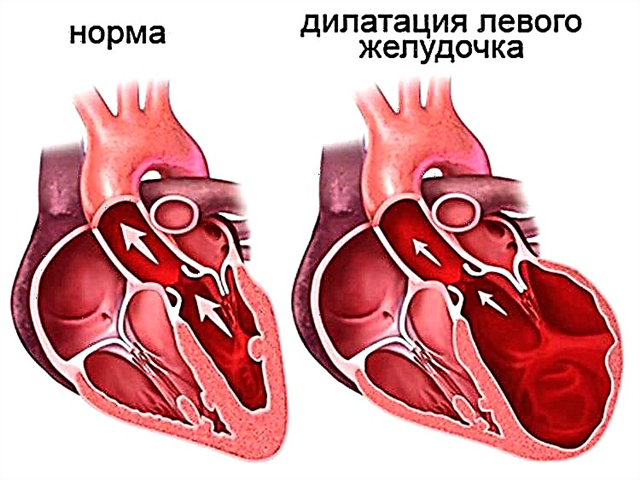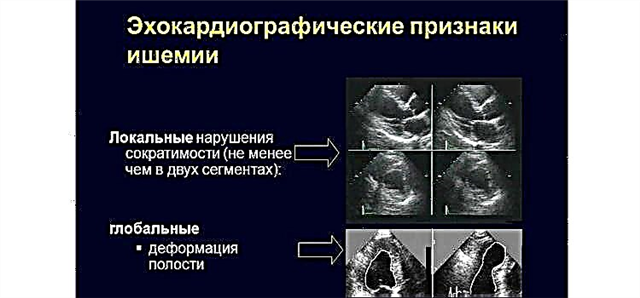Why does the head hurt when the pressure rises?
Arterial hypertension (AH) is a sustained and prolonged rise in pressure (> 135/85 mm Hg), which has arisen against the background of an increase in peripheral vascular resistance.
In 90% of hypertension there is no clear cause (essential or primary hypertension), in the remaining 10% of the increase in blood pressure is due to renal, endocrine and other pathologies (symptomatic or secondary).
In the list of the international classification of headache, cephalalgia in arterial hypertension is assigned to the 10th class (associated with impaired homeostasis). That is, this symptom is secondary to the underlying disease. Correct treatment of the causative factor reduces the frequency and intensity of pain.

The mechanism of headache in patients with hypertension depends on many reasons, therefore, there are several types of cephalalgia:
- Caused by an increase in intracranial pressure due to obstructed outflow of blood through the veins (liquorodynamic)... It occurs with insufficient resistance of the vascular wall. High pressure expands the lumen of the vessel, and the blood "stagnates" in the venous bed.
- Vascular (violation of the tone of intracranial arterioles). If GB is caused by vasodilation, then its strength will decrease while pressing the jugular veins. In the case of vasospasm, pain will be relieved by bilateral pressure on the carotid arteries.
- Associated with cerebral ischemia (hypoxic)... Prolonged spasm of the intacranial arterioles makes it difficult to deliver oxygen to the tissues, and perivascular edema develops.
- Muscular... Excessive tension of the scalp muscles due to emotional or physical stress. Patients with neurasthenic and depressive tendencies, osteochondrosis, posture disorders, reduced visual acuity are prone to this type of pain.
It is worth remembering: a headache is not in all cases equal to an increase in blood pressure!
With a long course of the disease in hypertensive patients, it is impossible to establish a clear connection between an increase in pressure and the development of cephalalgia. Over time, some adaptation of the vascular wall to the increased blood flow occurs, and the pain sensations dull or disappear altogether. In such patients, only an increase in the numbers on the tonometer by more than 25% of the "workers" provokes an attack of cephalalgia.
It should also be borne in mind that a headache of a different origin itself indirectly increases blood pressure.
Factors provoking the appearance of GB:
- emotional shock;
- hard physical labor;
- weather changes;
- alcohol abuse;
- large doses of caffeine;
- some medicinal substances ("Nitroglycerin", "Rinatidine", calcium channel antagonists, "Dipyridamole", "Indomethacin", "Acetylsalicylic acid", "Euphyllin", oral contraceptives, etc.).
A causal relationship between cephalalgia and high blood pressure can be traced only in such cases:
- An increase in diastolic (lower) blood pressure> 25% of the patient's mean. Such an attack goes away within 24 hours after the pressure is reduced.
- If diastolic blood pressure is> 120 mm Hg. Art. Then cephalalgia appears in the morning, after sleep, has a pressing, bursting character. Preferential localization: occiput, temporal region. Additionally, there is nausea, rarely vomiting.
- GB, which develops during an attack of hypertensive encephalopathy (an emergency condition accompanied by a rise in diastolic blood pressure> 130 mm Hg, edema of the optic nerve head, confusion, may result in hemorrhagic stroke).
- If GB develops with eclampsia (a life-threatening condition of pregnant women with an increase in blood pressure, generalized edema, protein in the urine, convulsions). After normalization of pressure or childbirth, cephalalgias disappear.

The nature of headaches, depending on the mechanism of occurrence:
- Liquorodynamic. Feeling of fullness in occiput, sometimes with throbbing. It intensifies in the morning hours, in a supine position, head tilts. Additionally, there may be nausea, weakness, blurred vision, swelling of the eyelids.
- Vascular. Rhythmic throbbing pain ("blows to the back of the head and temples"), aggravated by walking, turning the head, coughing. Sometimes it is accompanied by noise in the head, congestion of the ears, flashes before the eyes.
- Ischemic. Dull, aching pain in the temporo-occipital region, accompanied by dizziness, nausea, asterisks before the eyes, decreased attention, memory.
- Muscular. Constriction from occiput to forehead (hoop, helmet). Arises after emotional stress, the intensity has a wave-like character.
Arterial hypertension is the main cause of the development of cerebrovascular diseases (transient ischemic attack, stroke), intracranial hemorrhage and subarachnoid hematomas. Therefore, special attention should be paid to cephalgia in hypertension.
The headache in a hypertensive patient is sometimes caused by other causes that increase blood pressure:
- migraine;
- tension headache;
- intracranial hemorrhage;
- brain tumors;
- pheochromacytoma;
- intracranial aneurysm;
- glaucoma.
Tension headaches are often present in patients with mild high blood pressure. They are characterized by:
- provoking factors in the form of emotional and mental stress;
- mild to moderate pain;
- the constricting nature of the pain;
- no nausea, dizziness, visual disturbances;
- the attack goes away within one to two hours after taking conventional NSAIDs or on its own.
List of drugs for relief of the condition
The effectiveness of headache elimination depends on the determination of the mechanism for the development of the symptom and the point effect on it with a suitable medicine.
The most common pills for relieving cephalalgia are various nonsteroidal anti-inflammatory drugs (NSAIDs). Medicines in this group have a similar mechanism of action and caused effects: analgesic, antispasmodic and antipyretic. But each medication affects the body to varying degrees. Elimination of pain after taking NSAIDs usually occurs in 0.5-2 hours due to a decrease in the production of inflammatory agents, tissue edema and inhibition of pain impulses in the cerebral cortex.
Uncontrolled intake of NSAIDs leads to a number of complications:
- allergic reactions;
- bronchospasm in patients sensitive to Aspirin;
- ulcerative lesions of the gastrointestinal tract;
- decreased hepatic and renal function;
- abusal headache (in case of abrupt withdrawal after prolonged use of high doses of the drug).
Also in the treatment and prevention of headache associated with high diastolic blood pressure, beta-blockers have proven themselves well. These drugs are used for ischemic heart disease, angina pectoris and hypertension. By normalizing vascular tone and lowering blood pressure, medications additionally help with cephalalgia in patients with hypertension and migraine.
Beta blockers should not be taken without consulting a doctor, as they have a number of contraindications:
- bronchial asthma, obstructive pulmonary disease;
- violation of intracardiac conduction;
- uncontrolled diabetes mellitus;
- peripheral vascular disease with trophic skin changes.
As an additional therapy for headache associated with impaired venous return from the cranial cavity, the doctor sometimes adds diuretics ("Furosemide", "Veroshpiron" or "Diacarb").
Combined drugs with antispasmodics will help relieve vascular headache with high blood pressure.
Medicines for headaches with high blood pressure:
| Type of headache | Name of the medicine | Dosage | Multiplicity of application |
|---|---|---|---|
| Liquorodynamic | "Acetylsalicylic acid" | 250-500 mg | 2 rubles / day |
| "Metoprolol" | 100-200 mg | 2 rubles / day | |
| "Diakarb" | 250 mg | 1 r / day | |
| "Furosemide" | 40-80 mg | 1 r / day | |
| "Veroshpiron" | 25-100 mg | 1 r / day | |
| Vascular | "Metoprolol" | 100-200 mg | 2 rubles / day |
| "Propranolol" | 40-240 mg | 2-3 rubles / day | |
| "Analgin" | 1 tab | 1-2 rubles / day | |
| "Spazmalgon" | 1 tab | 1-2 rubles / day | |
| "No-Shpa" | 1-2 tab | 2-3 rubles / day | |
| Ischemic | "Acetylsalicylic acid" | 250-500 mg | 2 rubles / day |
| "Citramon" | 1 tab. | 2-3 rubles / day | |
| Muscular | Ibuprofen | 400-600 mg | 2-3 rubles / day |
| "Dexalgin" | 12.5-25 mg | 3-4 rubles / day | |
| "Analgin" | 250-500 mg | 1-2 rubles / day | |
| "Midocalm" | 50mg | 3 r / day | |
| "Tempalgin" | 1 tab. | 2 rubles / day |
In a pharmacy, NSAIDs with the same active substance have different names, manufacturer and price (Ibuprofen - Ibuprom - Imet - Nurofen). This variety allows you to choose an inexpensive medicine for headaches with high blood pressure.
Not recommended tablets for high blood pressure headaches:
- "Nimesulide";
- Ketorolac;
- large doses of "Paracetamol" (elderly patients with reduced liver and kidney function);
- combined preparations containing codeine in combination with caffeine - "Pentalgin", "Pyatirchatka", "Tetralgin", "Sedalgin-Neo".
Also, people with hypertension should not consume various adaptogens (ginseng root, eleutherococcus extract, lemongrass herb, "Pantokrin").

When taking pills for headaches with high blood pressure, follow the safety rules:
- do not take over-the-counter pain relievers for long periods of time;
- do not prescribe the drug yourself, guided by the advice and reviews of friends;
- start treatment with lower doses of lighter drugs (Ibuprofen, Paracetamol);
- do not take several medicines at the same time;
- refrain from alcoholic beverages;
- seek medical attention if severe symptoms occur.
Additional manifestations in which you need to see a doctor:
- persistent headache, not relieved by various types of analgesics;
- the need to drink pain relievers for more than 15 days in the previous month;
- soreness to touch areas of the skin on the face and head;
- morning headache, accompanied by persistent nausea and vomiting;
- constant dizziness;
- decreased visual acuity, hearing, double vision;
- muscle cramps;
- numbness of body parts;
- paresthesia ("goosebumps");
- persistent dizziness;
- swollen lymph nodes, prolonged fever.
Non-drug methods will also help to ease the headache:
- Airing the premises, walking in the fresh air.
- Self-massage of the temporal, occipital region, back of the neck.
- Glass of water.
- Breathing exercises.
- Aromatherapy (lavender, orange, lemon, mint).
- Relaxation. Lie in silence and darkness with closed eyes for 15-30 minutes.
- Chamomile tea.
- Cold compress on the frontotemporal region.
Conclusions
Headache isn't always directly related to high blood pressure! The causes of cephalalgia are varied.
Hypertensive patients with frequent attacks of cephalalgia, poorly controlled by conventional analgesics, should be comprehensively examined to determine the cause and select an adequate treatment.
People with hypertension should consult a specialist before using any medication. The doctor will select the most suitable non-pressure-increasing headache pills that are compatible with medications for treating the underlying disease.



